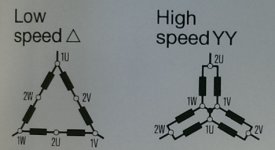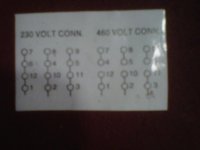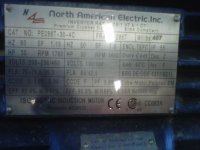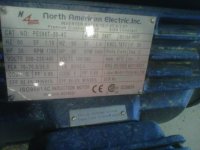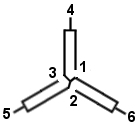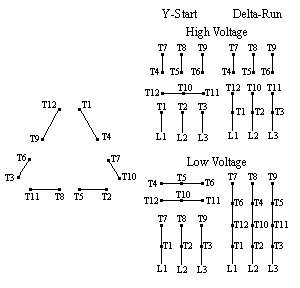keshik
Lifetime Supporting Member
Hello,
I have a question about wye (star)/delta two speed motor control.
I've attached a picture of the system that I inherited from an Italian company. QMPF-1 is a 32 amp max starter and QMPF-2 is a 63 amp max starter.
My first question is on wiring this system to a 12-lead motor. This is what my best guess is:
411 --> T12
412 --> T10
413 --> T11
415 --> T1
417 --> T2
419 --> T3
inside the enclosure:
T7 --> T4
T8 --> T5
T9 --> T6
Does this look correct?
My next question is in regards to starting this system. This is what I figure:
Energize KM-PF2.1 (shorting contactor)
Energize KM-PF2.2
(wait until second speed is needed)
De-energize KM-PF2.1 (shorting contactor)
Energize KM-PF1
Does that make sense?
My last question is in regards to starter sizing. It seems odd to me to have (at full speed) two starters of different sizes connected to the load. Are we at this point only using the smaller (second) starter to trip out the panel? Is the first (larger) sized larger to provide most capacity during starting?
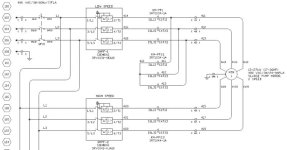
I have a question about wye (star)/delta two speed motor control.
I've attached a picture of the system that I inherited from an Italian company. QMPF-1 is a 32 amp max starter and QMPF-2 is a 63 amp max starter.
My first question is on wiring this system to a 12-lead motor. This is what my best guess is:
411 --> T12
412 --> T10
413 --> T11
415 --> T1
417 --> T2
419 --> T3
inside the enclosure:
T7 --> T4
T8 --> T5
T9 --> T6
Does this look correct?
My next question is in regards to starting this system. This is what I figure:
Energize KM-PF2.1 (shorting contactor)
Energize KM-PF2.2
(wait until second speed is needed)
De-energize KM-PF2.1 (shorting contactor)
Energize KM-PF1
Does that make sense?
My last question is in regards to starter sizing. It seems odd to me to have (at full speed) two starters of different sizes connected to the load. Are we at this point only using the smaller (second) starter to trip out the panel? Is the first (larger) sized larger to provide most capacity during starting?







